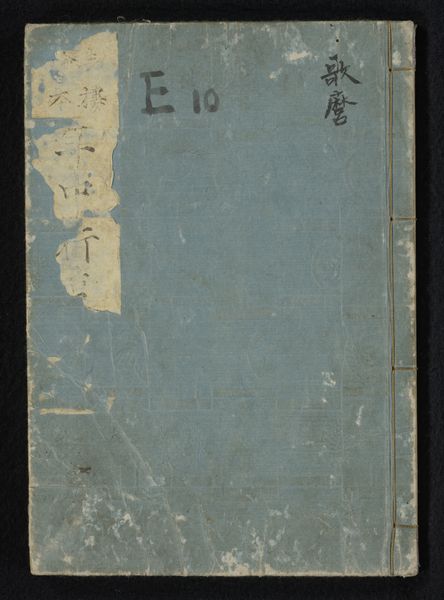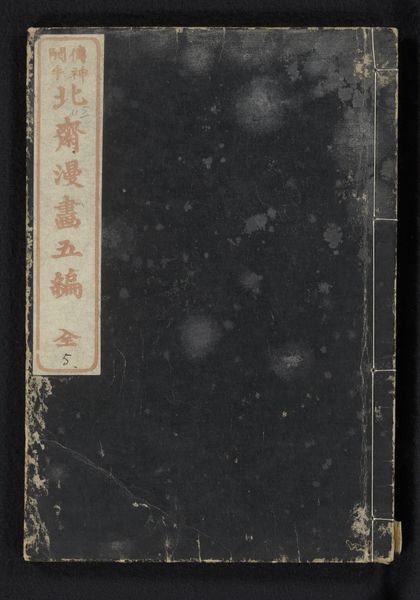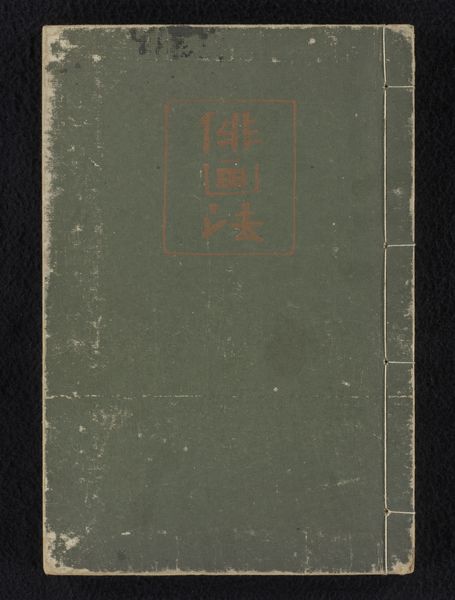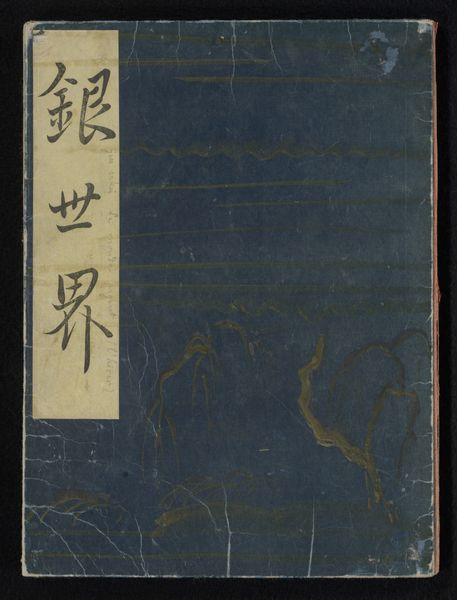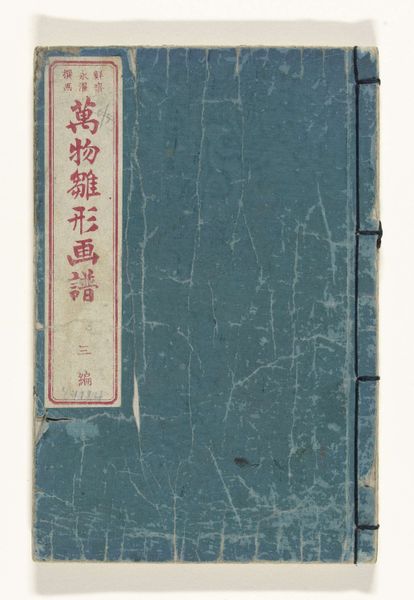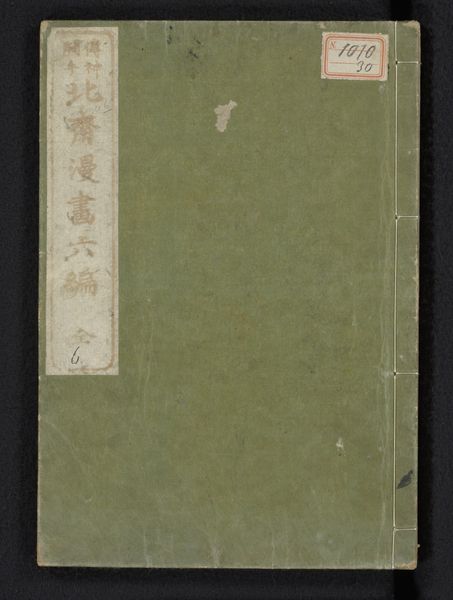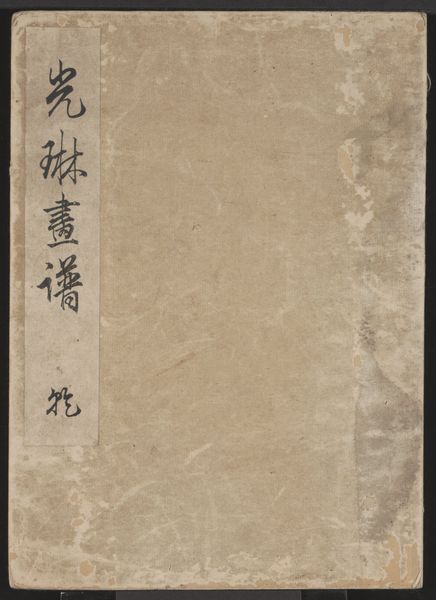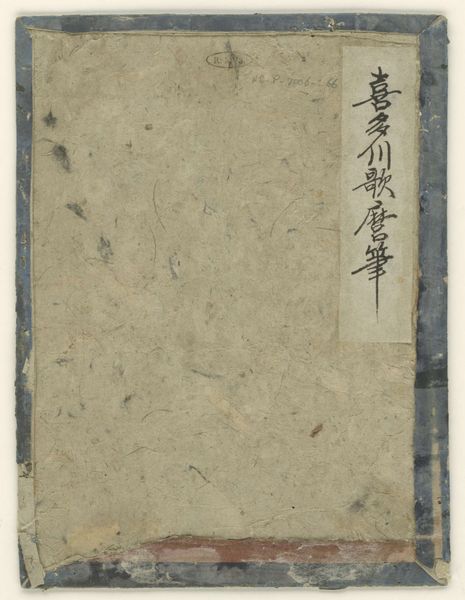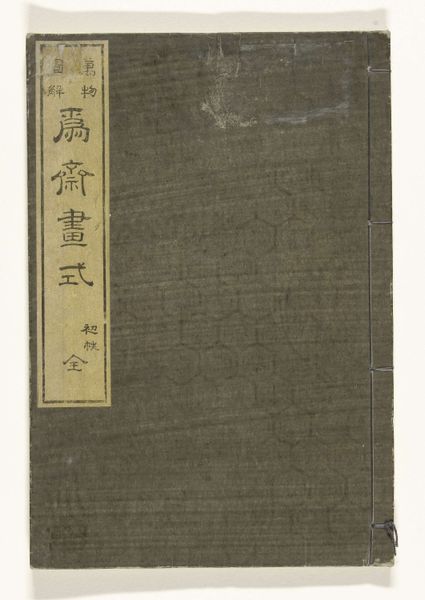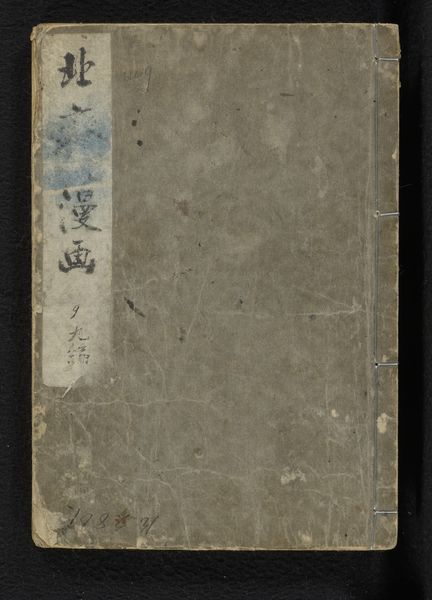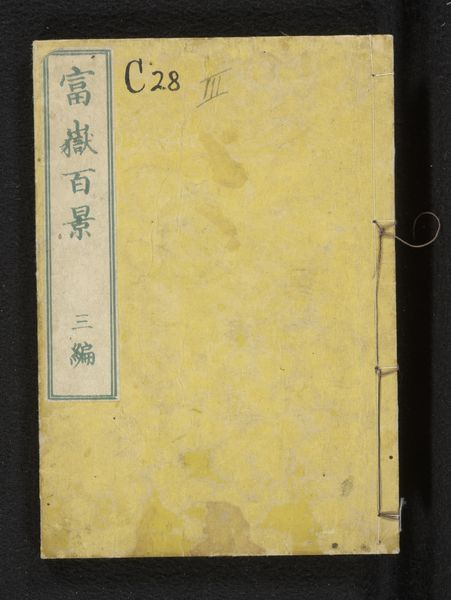
mixed-media, print, paper, woodblock-print
#
mixed-media
# print
#
ukiyo-e
#
paper
#
woodblock-print
#
mixed media
Dimensions: height 258 mm, width 185 mm
Copyright: Rijks Museum: Open Domain
This is the cover of ‘Kyôka Verse for the Young Ebisu’ by Kitagawa Utamaro, a woodblock printed book from Japan’s Edo period. This was an era when the merchant classes were rising in wealth and power, even though the social hierarchy still placed them beneath the samurai. Popular culture boomed, especially in urban centers such as Edo, now Tokyo. Publishers and artists responded to the growing demand for printed material. Genres such as *ukiyo-e*, or ‘pictures of the floating world’, were popular, often depicting the licensed pleasure quarters of the cities. This book cover is an example of that popular publishing industry. Ebisu is one of the seven gods of good fortune, and the kyoka style of poetry was a playful, parodic form. The title suggests this book was aimed at a younger audience. Understanding the history of printing, the development of urban culture, and the relationship between social class and artistic production are just some of the ways a historian can shed light on the images we see in museums. Careful research into economic and social history allows us to understand art as a product of its time.
Comments
No comments
Be the first to comment and join the conversation on the ultimate creative platform.
